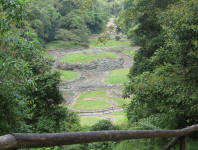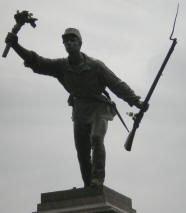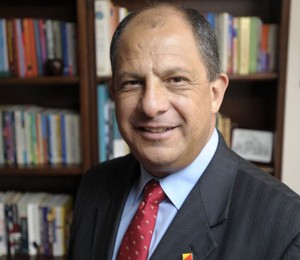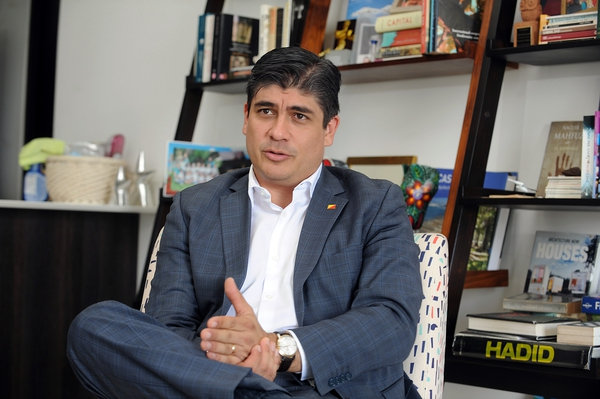HISTORY
At the beginning of the 16th century, several Indian peoples lived in what is now Costa Rica. On his fourth voyage to the “New World”, Columbus set foot on September 18, 1502 near present-day Puerto Limon. The Native Americans treated him with respect, and during his 17-day stay, Columbus noticed that some of the Native Americans were carrying gold objects. The Spaniards therefore thought that there would be a lot of gold in the interior and therefore called the country Costa Rica, which means "rich coast".
As early as 20,000 BC, nomadic tribes roamed what is now Costa Rica. Smaller settlements did not arise until 1000 BC. The Indians gathered wild fruits, fished and hunted with bows and arrows. They also made ceramic pots and grew root crops and later also maize and cocoa. By 500 BC it was an orderly society with political and religious sufferers.
When Columbus arrived in Costa Rica, large settlements existed in the bays of Guanacaste and in the central valley, where ceramic objects were made with highly developed techniques. On the slope of the Turialba volcano lay the thriving city of Guayabo. However, this city was still mysteriously abandoned around 1400 AD So even before the Spaniards arrived. Three tribes lived in Costa Rica. The Huetares on the central plateau and on the Caribbean coast, the Chorotegas in the north of Costa Rica and in the south of Nicaragua, and the Bruncas in the south as far as Panama.
The pre-Colombian peoples left virtually no structures behind. Their descendants now live partly in 35 reservations.
You can visit the Bri Bri Indians in Talamanca in the southeast. You will be offered a lot of cottage industry here.
You can also visit the Indians of Boruca. This Indian tribe lives in the Southwest. Between Palmar Norte and Paso Real. They are best known for the handmade masks. Around New Year they celebrate the so-called devil party. This festival symbolizes the fighting between the Indians and the settlers.
Guayabo on the slope of the Turrialba volcano

Dense jungles, rugged mountains, food shortages and aggressive resistance from the Indians initially thwarted the Spanish plans to colonize Costa Rica. It was not until 1562 that Vásquez de Coronado succeeded in building a settlement in the cool climate and fertile soil of Cartago. He treated the Indians fairly and managed to make them allies. However, the number of Indians dropped dramatically due to European diseases brought by the Spaniards, which the Indians were unable to resist.
The government of the colony of Costa Rica was based in Guatemala. The distance was so great (3 months on horseback) that there was little interest in Costa Rica. The country was therefore very impoverished. A nation of self-reliant peasants arose who were not tied to a class system as in Guatemala and Mexico. Costa Rica gradually began to change in the early 18th century. Three new cities were founded, Heredia in 1706, San Jose in 1737 and Alajuela in 1782. Tobacco was introduced during this period and Spain gave Costa Rica exclusive rights to grow this crop. This in an effort to help the ailing colony. In 1808, free land was offered as an incentive to anyone who wanted to grow a new crop imported from Cuba. Coffee was the beginning of Costa Rica's boom. In 1821 the Spanish Crown relinquished its authority in Central America. Although the leaders of the four major cities quickly agreed on a constitution, there was great confusion. A battle broke out between the proponents of independence (San Jose and Alajuela) and the conservatives (Cartago and Heredia), with the independence movement winning. The inhabitants of Guanacaste proceeded more democratically and in a referendum (1821 !!) declared themselves in favor of joining Costa Rica. In 1837, the capital of Costa Rica was moved from Cartago to San Jose. This is partly because of Cartago's attitude during the independence struggle. In 1855 a new crisis followed in the early existence of the country. William Walker, an adventurer from Tenesse (USA) wanted to make an "ideal state" of all of Central America, where slavery would have been institutionalized. He invaded Nicaragua in 1855, supported by the President of the United States. and entered Costa Rica. Rafael Mora, the president of Costa Rica, hastily assembled an army of mainly farmers and traders, who chased Walker and his men away. In doing so, the heroic Juan Santamaria set fire to the invaders' hideout, but was himself killed in the process. The statue of Juan Santamaria is located at the international airport of the same name and in the center of his hometown of Alajuela. He is commemorated on April 11 with a national holiday. hastily assembled an army of mostly farmers and merchants, who chased Walker and his men away. In doing so, the heroic Juan Santamaria set fire to the invaders' hideout, but was himself killed in the process. The statue of Juan Santamaria is located at the international airport of the same name and in the center of his hometown of Alajuela. He is commemorated on April 11 with a national holiday. hastily assembled an army of mostly farmers and merchants, who chased Walker and his men away. In doing so, the heroic Juan Santamaria set fire to the invaders' hideout, but was himself killed in the process. The statue of Juan Santamaria is located at the international airport of the same name and in the center of his hometown of Alajuela. He is commemorated on April 11 with a national holiday.
Juan Santamaria

In 1889, a new constitution was adopted that included democratic elections every four years. In 1890 the Atlantic Railway was put into operation. This ensured the transport of a newly introduced crop, namely the banana. By 1913, the plantations were producing 11 million bunches of bananas a year and Costa Rica was the world's leading exporter. However, due to earthquakes, the railway has become out of use.
The domestic economy collapsed during the recession of the 1930s. After 1940, President Calderon introduced social reforms aided by the unions. But he ruled like a dictator. In 1948, José Figueres came to power in a coup d'état. He reformed the corrupt, inefficient public administration and expanded Calderon's social reforms and abolished the military. The money that was released was invested in education and health care. Figueres' new constitution of 1949 laid the foundations for today's pacifist democracy. Costa Rica also plays an important role in peace affairs on a global level. Former President Oscar Arias was awarded the Nobel Peace Prize in 1987 for this. To prevent corruption, the constitution stipulated that a president could rule for a maximum of 4 years. This was changed with an amendment to the constitution a few years ago. A president can now be elected for a second term. But never two terms in a row. Presidential elections were held in February 2010. Laura Chinchilla has been elected as Costa Rica's first female president. She is a party colleague of Oscar Arias, whom she succeeded.
Oscar Arias at his installation as president on May 8, 2006

Laura Chinchilla, president from 2010 to 2014

On February 2, 2014, elections were held again for both a new president and a new parliament. None of the candidates for president received enough votes to be elected equally. A second round will be held on April 6. The two remaining candidates are Johnny Araya and Luis Guilermo Solis,
In the first round, they both had about 30% of the vote.
In the second round on April 6, 2014, Luis Guillermo Solis was elected president.

On May 1, 2018, Carlos Alvarado was installed as the new president.
He was also chosen in a second round. He is the youngest president Costa Rica has ever had.
.



